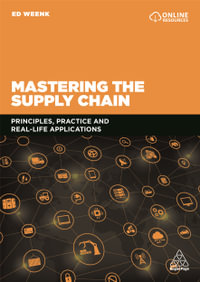
Innovation Ecosystems
How Driving Forces and Success Factors Affect Opportunities for Business Innovation
By: William B Rouse
Hardcover | 18 September 2024
At a Glance
Hardcover
RRP $273.00
$193.25
29%OFF
Aims to ship in 7 to 10 business days
ISBN: 9781032830414
ISBN-10: 1032830417
Published: 18th September 2024
Format: Hardcover
Language: English
Number of Pages: 196
Audience: Professional and Scholarly
Publisher: Taylor & Francis Ltd
Country of Publication: GB
Dimensions (cm): 25.4 x 17.78 x 1.27
Weight (kg): 0.56
Shipping
| Standard Shipping | Express Shipping | |
|---|---|---|
| Metro postcodes: | $9.99 | $14.95 |
| Regional postcodes: | $9.99 | $14.95 |
| Rural postcodes: | $9.99 | $14.95 |
How to return your order
At Booktopia, we offer hassle-free returns in accordance with our returns policy. If you wish to return an item, please get in touch with Booktopia Customer Care.
Additional postage charges may be applicable.
Defective items
If there is a problem with any of the items received for your order then the Booktopia Customer Care team is ready to assist you.
For more info please visit our Help Centre.
You Can Find This Book In
This product is categorised by
- Non-FictionEconomics
- Non-FictionBusiness & ManagementBusiness Strategy
- Non-FictionBusiness & ManagementManagement & Management TechniquesManagement of Specific AreasResearch & Development Management
- Non-FictionBusiness & ManagementManagement & Management TechniquesManagement of Specific AreasProduction of Quality Control Management
- Non-FictionBusiness & ManagementOrganisational Theory & Behaviour
- Non-FictionEngineering & TechnologyTechnology in GeneralEngineering in General
- Non-FictionBusiness & ManagementManagement & Management TechniquesLeadership & Motivation for Management
- Non-FictionEngineering & TechnologyIndustrial Chemistry & Manufacturing TechnologiesOther Manufacturing Technologies
- Non-FictionEngineering & TechnologyEnvironmental Science
- Non-FictionBusiness & ManagementManagement & Management TechniquesManagement Decision Making
- Non-FictionBusiness & ManagementBusiness Innovation























